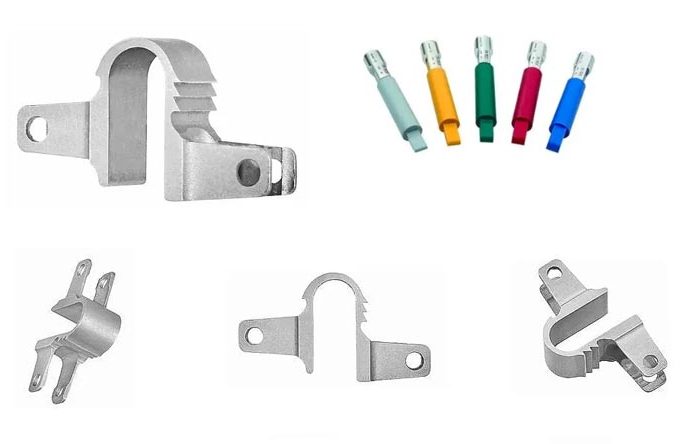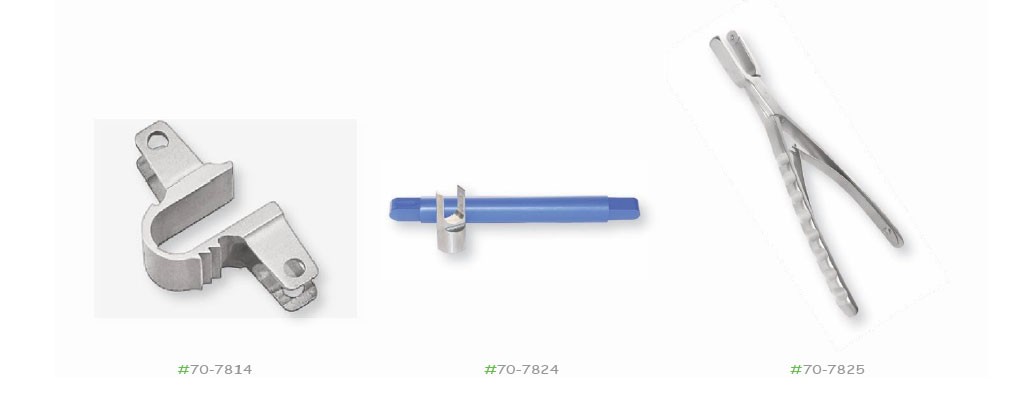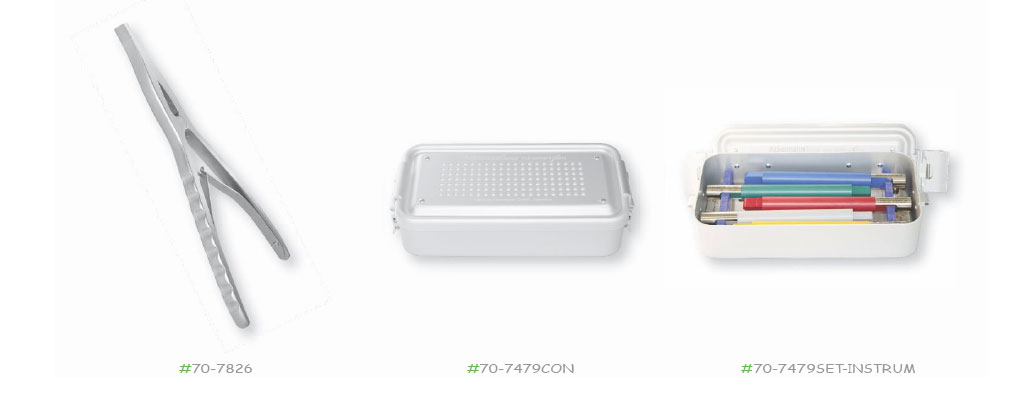Interspinous Process Device
Concentration on the Essentials
We have made it our mission to produce only products offering maximum benefit to patients, the attending physicians, and customers.
Therefore we have committed ourselves offering our goods in the best possible quality at consistently low prices.
This is not only due to our own production and development, but also to our consistent concentration on the essentials
■ no compromises in quality
■ optimization of the sales management
■ responsible marketing

Indications
■ lumbar disc herniation and degenerative spinal stenosis
■ Degenerated facet joints
■ Lumbar spine instabilities
■ Pseudoarthrosis or spondylolisthesis
Design
The u|spine dynamically supports the stability of the spinal column implementing a non-fusion approach and reliefs from restrictions to the spinal canal. Due to a proven surgical technique the appliance of this implant can be achieved minimally invasive and the tissue-conserving procedure ensures a fast recovery. Additionally, its design allows for a semi-fusion using a screw connection, if required.
Material
u|spine consists of a medical grade TiAL6V4 titanium alloy which is ideally suited due to its proven biocompatibility and stability. As with all other Ackermann Spine implants, all guidelines regarding quality and certification are being strictly adhered to.
Instrumentation Set
A color coded set of instruments serves the purpose of determining the size individually needed, as well as for the positioning and application of the implant itself. This way, the number of instruments needed is easily manageable and complications can be avoided.


Implants
70-7810
Limit 8 mm
70-7811
Limit 10 mm
70-7812
Limit 10 mm
70-7813
Limit 10 mm
70-7814
Limit 10 mm
Trials
70-7820 ► SET PART
8 mm
70-7821 ► SET PART
10 mm
70-7822 ► SET PART
12 mm
70-7823 ► SET PART
14 mm
70-7824 ► SET PART
16 mm
Instrumentation
70-7825 ► SET PART
Implant holder
70-7826 ► SET PART
Distraction forceps

Container & Sets
70-7479CON
Container, 300 mm x 140 mm x 70 mm, without insert, without instruments
70-7479I
Insert for instruments, 300 mm x 140 mm x 70 mm
70-7479SET-INSTRUM
Set with container, insert for instruments and instruments
Place of Use (immediately after use)
IMMEDIATELY after each use (within no more than 10 min. or before drying of contaminants) the instruments need to be cleaned and impurities removed under running water, using a soft brush or cloth used solely for this purpose. NEVER use a metal brush, steel wool or other cleaning devices containing metal in order to avoid the imminent risk of corrosion. Rinse under cold, running water until all visible impurities and contaminants have been successfully removed.
Storage and Transport
Place instruments in a container. Keep the inside of the container moist/wet (no contaminants shall dry).Reprocess all instruments soonest possible.
Preparation for Cleaning
Soak instruments in cold water for at least 5 min. and clean them, using a soft brush or cloth which are being used solely for this purpose. NEVER use a metal brush, steel wool or other cleaning devices containing metal in order to avoid the imminent risk of corrosion. Afterwards, wash down the entire surface of the instrument for 10s. by use of a cleaning gun (min. continuous pressure of 4 bar); articulate moveable parts constantly during the preliminary cleaning. Instruments featuring lumina and/or LuerLock flush channels are to be rinsed for an additional 10s. after visibly clear water has flown from the ports. Place the instruments in an ultrasonic bath for 10min. (35-40kHz for min. 5min. or longer acc. to specifications). Prior to switching on the ultrasonics make sure that all lumina, sheaths, etc. are filled with cleaning fluid!
Note that the preliminary cleaning – even the use of a disinfectant – is only intended as a preparatory step and DOES NOT replace the actual disinfection!
Mechanical Cleaning
Make sure that multiple instruments do not come in contact with each other; especially different materials such as titanium, brass, aluminum, stainless steel, etc. need to be cleaned separately in order to avoid formation of a rust film. Composite instruments (particularly stainless steel combined with ceramics) shall be placed with sufficient distance away from other products to prevent damage arising from the pressure of different thermal expansions.
Instruments have been tested with the following devices: Washer-Disinfector G 7735 CD (Miele)
1. washing cycle: alkaline program (No 105)
2. washing cycle: enzymology program (No 105)
Washer-Disinfector G 7836 CD (Miele)
1. two component alkaline/enzymatic program
2. OxiVario
Washer-Disinfector Niagara SI PCF (Medisafe) (RECOMMENDED)
1. Cleaning process with pulsed ultrasonic irrigation
2. Cleaning process without pulsed ultrasonic irrigation
The water which is to be used needs to be sterile or nearly sterile (<10 microbes/ml) and low in endotoxins (< 0.25 units/ml). The air which is being used for drying needs to be cleaned by means of micro filters which are regularly checked and maintained. A maintenance schedule has to be documented.
Manual Cleaning
Mechanical cleaning is mandatory with these products as they are classified as class „critical B“
according to the RKI/BfArM-recommendations.
Disinfection
Take the instruments and place them into the disinfecting bath (Caution: products need to be fully immersed; at least 1cm below the liquid surface).
Multiple instruments shall not come in contact with each other; especially different materials such as titanium, brass, aluminum, stainless steel, etc. need to be disinfected separately in order to avoid formation of a rust film. Composite instruments (particularly stainless steel combined witto prevent damage arigising from the pressure of different thermal expansions. Rinse all the lumina of the in- strument at least five times using a sterile syringe (min 50ml) and disinfectant.
After disinfection
Remove products and rinse for at least 5 min. under running water until all disinfectant is removed
from the instruments (the water which is to be used needs to be sterile or nearly sterile with <10
microbes/ml and low in endotoxins with < 0.25 units/ml).
Constantly articulate moveable parts.
Rinse all the lumina of the instrument with water at least five times using a sterile syringe (min 50ml).
Disinfectants that have been successfully tested are
1. Alkaline, Neodisher FA, pH 12.2, Dr. Weigert
2. Enzymatic, deconex 23 Neutrazym, pH 9.7, Borer
3. 2-Component Alkaline/Enzymatic, deconex TWIN PH, pH 10.9, deconex TWINZYME, pH 7, Borer
4. 2-Component Alkaline, Sekumatic FR, pH 12.1; Secumatic OxiVario. PH 7.8; Neutralizer: Sekumatic
FNZ, pH 2.2, Ecolab
5. Enzymatic; M20029 3E-Zyme Scope Plus, pH 6.1, Medisafe
6. Enzymatic + Ultrasound, M20029 3E-Zyme Scope Plus, pH 6.1, Medisafe
Drying
After cleaning and disinfection place the instruments into suitable containers. Make sure that there is NO residue of the disinfectant.
When drying as part of the cleaning/disinfection cycle is completed make sure that a temperature of
150°C/300°F is not exceeded.
All operations need to take place in a clean, monitored environment!
Maintenance
Apply a small amount of high-grade surgical lubricant on all joints or other moveable parts which are supposed to move smoothly. Sort out all blunt or damaged instruments.
Clearly damaged instruments (cracks on the insulation, breakage, strongly bleached polymer handles or coatings) are NOT to be reused but repaired or disposed of.
Testing and Inspection
Jointed instruments are to be tested for ease of movement (avoid too much backlash). The functionality of ratchet mechanisms needs to be checked. All instruments: visually check for damage and wear. Blades should be even and without notches. Long and narrow instruments (especially jointed instruments) should be particularly checked for damages. If instruments are part of a larger set they are to be checked together with all associated components.
Packaging
Individually: a standardized packaging material may be used. The size of each bag needs to match the individual instrument so that there is no tension applied on the sealing.
Sets: sort instruments into designated trays or place on multi-purpose sterilization trays. Blades need to be protected; the weight of each tray may not exceed 8kg (18lbs). For the trays an adequate packaging procedure is to be used.
Sterilization
All products have been precleaned to an extent which allows for processing and sterilization by use of the equipment stated here. This only applies to a processing method according to these instructions within a system that has been configured and validated in compliance with ISO 17665 and in which all cleaning/disinfecting devices comply with ISO 15883. With the result of the sterilization process greatly depending on the equipment that is being used a sterilization validation acc. to ISO 17665 MUST be performed at the place of use prior to the first application. All products MAY be used only if the result of this validation is positive.
For the sterilization of medical devices various methods can be applied. Regarding products manufactured by Ackermann, gravity steam sterilization with a fractionated process is recommended.
Temperature 134°C – 137°C (273°F – 279°F)
Pressure 3 bar
Duration 5 min
Please comply with all recommendations issued by the manufacturer of your sterilization device with regard to handling and loading. Instruments that are to be sterilized need to be thoroughly exposed to the steam, including inner surfaces. Before using the instruments they need to be cooled down to room temperature.
Other durations and/or temperatures may also be applied. However, when doing so deviations of parameters should be validated (Caution: contact the manufacturer of your autoclave to confirm temperatures and/or sterilization durations). Temperature inside the autoclave should not exceed
139°C/182°F. This could cause possible damage to handles, insulation or other non-metallic components. Do not sterilize using hot air or Processing and Sterilization Instructions of Medical Devices (acc. to ISO 17664) flash autoclave methods.
In case only pre-vacuum sterilization can be performed, please adhere to the following parameters:
for Europe ( except Switzerland and France ) Sterilizer type pre-vacuum Preconditioning pulses 3
Preconditioning pressure 30 psia Minimum temperature 134°C Cycle time 5 min.
Sample configuration individually wrapped
for Switzerland and France
Sterilizer type pre-vacuum
Preconditioning pulses 3
Preconditioning pressure 30 psia
Minimum temperature 134°C
Cycle time 18 min.
Sample configuration individually wrapped
others
Sterilizer type pre-vacuum
Preconditioning pulses 3
Preconditioning pressure 30 psia
Minimum temperature 132°C / 270 °F
Cycle time 4 min.
Sample configuration individually wrapped
Storage
Store instruments secured against mechanical damage. Use additional wrapping to protect against dust. Do not stack instruments which are packed sterile; especially do not place heavy items on top in order to avoid damage to the sterile packaging of other instruments.
Products need to be stored in a clean and dust-free environment at moderate temperatures of 19° – 25°C (66° – 77°F) and humidity of 40 – 60% (to avoid the risk of embrittlement of the sterile packaging AND of plastic components, especially handles).
Additional Information
Do not exceed maximum loading capacity of the sterilizer when processing multiple instruments in one sterilization cycle.
Warnings
ALL INSTRUMENTS MUST BE CLEANED, DESINFECTED AND STERILIZED PRIOR TO EACH USE.
All reusable Ackermann products are shipped in non-sterile condition. Before the first use transport packaging, coarse dust/pieces of paper/packaging remains need to be removed and each product processed and sterilized according to these instructions. All products have been precleaned to an extent which allows for processing and sterilization by use of the equipment stated here. This only applies to a processing method according to these instructions within a system that has been configured and validated in compliance with ISO 17665 and in which all cleaning/disinfecting devices comply with ISO 15883.
THOROUGH CLEANING AND DISINFECTION IS CRUCIAL FOR AN EFFECTIVE STERILIZATION! Especially in Germany, the adherence to and knowledge of the RKI/BfArM-recommendations is the prerequisite for these instructions. In accordance with EU Directive 93/42 processing is NOT permitted in Germany without comprehensive awareness of these guidelines!
Processing must only be carried out by personnel explicitly designated by §4 Abs. 3 MPBetreibV after verifying their qualification! Strong cleaning agents may cause fading of markings.
Limitations on Reprocessing
Instruments have been validated for 50 cycles, based on an average treatment.
Products that have been marked as single-use (acc. to DIN EN 980 2008-11/figure 5.2) MUST NOT be reprocessed! With such products materials are being used that are NOT reprocessable under normal conditions or do not withstand more than one sterilization process and, therefore, may break duringsurgery if reprocessed! (this applies to practically all single-use products featuring plastic components)